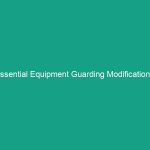Introduction
Water Safety and drowning Prevention are critical components of health, safety, and Environment (HSE) practices. Every year, thousands of individuals face life-threatening situations in water bodies due to lack of awareness and insufficient Safety Measures. Understanding the nuances of water Safety is vital not only in recreational settings but also in workplaces where water Hazards exist, such as construction sites, pools, and marinas. This article will delve into various aspects of water safety and drowning prevention, providing valuable insights that can help safeguard lives.
Understanding Water Safety Regulations
Water safety regulations are designed to minimize risks associated with water-related activities. Various organizations and authorities establish these regulations to ensure Public Safety. Regulatory frameworks often vary by region and type of water body, but they share common goals.
Key Regulatory Frameworks
In many countries, regulations such as the Occupational Safety and Health Administration (OSHA) in the United States set forth guidelines for Workplace Safety. These guidelines include specific provisions for water safety in environments where water Hazards are present. For instance, osha mandates that employers assess potential water-related risks and implement appropriate controls.
International Standards
Internationally, organizations like the World Health Organization (WHO) provide comprehensive guidelines on water safety and drowning prevention. These guidelines encompass various areas, including:
- Safe swimming practices
- Emergency response measures
- Community education and awareness programs
Compliance and Enforcement
Compliance with water safety regulations is essential for reducing drowning incidents. Authorities conduct regular inspections and audits to ensure that establishments adhere to Safety Guidelines. Non-compliance can lead to severe penalties, including fines and closures, highlighting the importance of rigorous adherence to these regulations.
Best Practices for Water Safety
Implementing Best Practices in water safety is crucial for preventing accidents and ensuring a safe environment for everyone. These practices should be tailored to specific settings, whether it be a public pool, a beach, or a workplace.
Conducting Risk Assessments
Before engaging in any water-related activity, it is essential to conduct a thorough risk assessment. This involves identifying potential hazards such as:
- Depth and current of the water
- Presence of lifeguards or safety personnel
- Accessibility of rescue equipment
By recognizing these hazards, individuals and organizations can implement appropriate Control Measures to mitigate risks effectively.
Training and Education
Education plays a vital role in water safety and drowning prevention. Regular Training sessions for employees, lifeguards, and community members can significantly enhance awareness and preparedness. Training should cover:
- Basic swimming skills
- Rescue techniques
- First aid and CPR
Moreover, educational campaigns can help raise awareness about the dangers of water, particularly for vulnerable populations such as children and the elderly.
Utilizing Safety Equipment
Effective water Safety Measures include the use of appropriate safety equipment. This could range from life jackets to buoyancy aids. Having readily accessible flotation devices in swimming areas can save lives. Additionally, it is essential to ensure that all safety equipment is maintained regularly and meets the required safety standards.
Case Studies: Learning from the Past
Examining real-life case studies can provide valuable lessons in understanding water safety and drowning prevention. These incidents often reveal both successes and failures in adhering to safety protocols.
Case Study 1: Pool Safety Regulations
A notable case occurred in a community pool where safety regulations were not strictly enforced. The absence of lifeguards led to several near-drowning incidents. As a response, local authorities implemented mandatory lifeguard training and regular safety inspections. This resulted in a significant decrease in incidents and highlighted the need for strict adherence to safety regulations.
Case Study 2: Beach Safety Initiatives
In another instance, a beach resort faced multiple drowning incidents during peak seasons. In response, the management launched a comprehensive training program for staff and increased the number of lifeguards on duty. They also introduced educational programs for guests on water safety, which led to a safer environment and increased guest satisfaction.
Challenges in Water Safety and Drowning Prevention
Despite the existence of regulations and Best Practices, several challenges persist in water safety and drowning prevention efforts. Understanding these challenges is crucial for developing effective strategies.
Lack of Awareness
One of the primary challenges is the general lack of awareness about water safety. Many individuals underestimate the risks associated with water activities, leading to negligence. Increased educational efforts and community outreach can help bridge this knowledge gap.
Resource Constraints
Many organizations struggle with limited resources to implement comprehensive water safety programs. Budget constraints can hinder training, equipment purchases, and safety audits. However, prioritizing water safety through strategic planning and resource allocation is essential for mitigating risks.
Environmental Factors
Environmental factors, such as weather conditions and water quality, can also pose significant challenges. Poor visibility due to murky waters or strong currents can increase the risks of drowning. Establishing protocols for monitoring environmental conditions can help ensure a safer experience.
Future Trends in Water Safety
The field of water safety and drowning prevention is continually evolving. Emerging trends indicate a shift towards more innovative and technology-driven solutions for enhancing safety measures.
Technology Integration
Advancements in technology have paved the way for improved safety measures, including the use of drones for surveillance in large water bodies. These drones can monitor swimming areas, detect potential hazards, and even assist in rescue operations. Furthermore, mobile applications that provide real-time water conditions and safety alerts are becoming increasingly popular.
Community Engagement
Community engagement initiatives are gaining traction as a means of enhancing water safety. Collaborations between local governments, non-profits, and community organizations can lead to more effective safety campaigns and training programs. Encouraging community members to participate actively in water safety discussions fosters a culture of safety and accountability.
Policy Advocacy
Advocating for stronger water safety policies is essential for addressing systemic challenges. Engaging with policymakers to enforce stricter regulations and ensure adequate funding for safety programs can drive significant changes. Collective efforts can lead to enhanced standards and practices that protect individuals from drowning.
Conclusion
Water safety and drowning prevention are paramount for ensuring a secure environment in both recreational and work-related settings. Understanding the regulatory frameworks, implementing best practices, and learning from past experiences can significantly contribute to reducing drowning incidents. By actively engaging with communities and leveraging technology, we can pave the way for a future where water activities are not only enjoyable but also safe. Let us all take responsibility for water safety and advocate for practices that protect lives. Together, we can make a difference!


